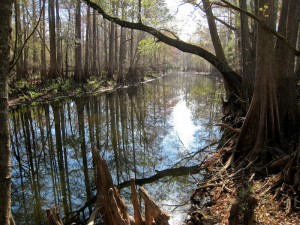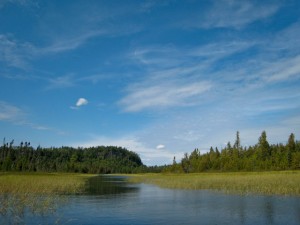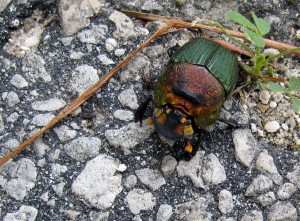 The Withlacoochee State Trail stretches 46 miles through farmland, small towns, oak hammock, pine scrub, and bald cypress swamps. We rode from the Ridge Manor Trail Head to Floral City and back (approximately 34 miles, see detailed map). This route took us through a wildlife management area and state forest. The trail is well maintained and mostly isolated from car traffic.
The Withlacoochee State Trail stretches 46 miles through farmland, small towns, oak hammock, pine scrub, and bald cypress swamps. We rode from the Ridge Manor Trail Head to Floral City and back (approximately 34 miles, see detailed map). This route took us through a wildlife management area and state forest. The trail is well maintained and mostly isolated from car traffic.
At one point we were close enough to walk down to the Withlacoochee River. There was no perceptible current, but the water was clear. Cypress knees were in abundance and reminded me of a coral reef.
We saw two gopher tortoises (2) along the way. Both had sandy soil clinging to their backs. There were numerous small birds I couldn’t identify (warblers?) as well as a flock of wild turkey foraging at the wood’s edge.
Check out this gallery of additional photos from along the trail.




